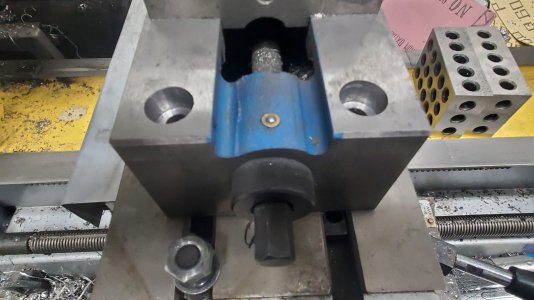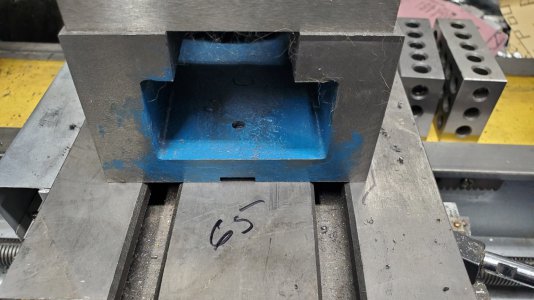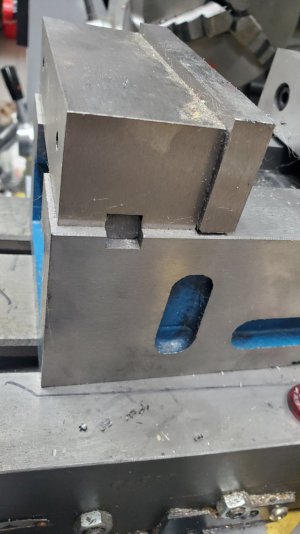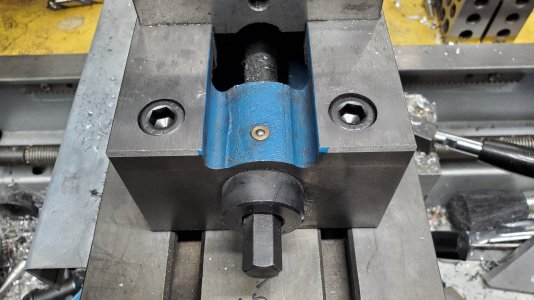- Joined
- Feb 24, 2019
- Messages
- 925
My vise came with locators but they didn't match up well with my table.My machinist's vise came with removable locating lugs for the bottom of the vise. I use them for quick and dirty setups where I don't need precision alignment. Mounting the vise takes less than a minute. For precise work, I sweep the vise jaws with an indicator.
Perhaps I'm just lazy, but having a quick on/off setup makes it less likely that I will "make do" with a less than ideal part fixture. The lugs also ensure that I'm within a thou or so of precise alignment which make the precision alignment much faster. The lugs are narrower than the tee slots and I use the front edge of the slot as my datum. I press the vise lugs into close contact with that edge by using a block of wood between the rear of the vise and the column to prevent it walking when I tighten the mounting bolts.
Remember, I only put the external locators for repeatability. The first time I put them on, and every time I need to remove them, I will tram the vise properly.
I won't need to take them off very often. Maybe only a couple times in the last 8 years would I have had to remove them.





